October 19, 2022 – H.H. Radhanatha Swami & H.H. Niranjana Swami
→ Dandavats
Read More...
Websites from the ISKCON Universe
 By Bhaktisiddhanta Swami
By Bhaktisiddhanta Swami The meanings of Dipavali, its symbols and rituals, and the reasons for celebration are innumerable. Dipavali celebrates Lord Rama's glorious and long-awaited return to His Kingdom of Ayodhya after his fourteen long years of exile in the forests. It commemorates Lord Krsna's victory over the demon Narakasura who had kidnapped and terrorized the gopis of Vrndavana. Before the evil Naraka was finally killed by Bhagavan Krsna in the presence of Satyabhama, he begged pitifully for mercy; thus, upon his entreaties, it was declared that this day of his death would be celebrated with great joy and festivity. It is also celebrated as the day Bhagavan Visnu married Maha Laksmi. Continue reading "Dipavali at Radha Kunda
→ Dandavats"
ISKCON, Chowpatty, in academic collaboration with the Bhaktivedanta Institute for Higher Studies in Gainesville, Florida (BIHS) and the Bhaktivedanta Research Center in Mumbai (BRC), will be hosting an international hybrid cosmology conference at the Govardhan EcoVillage (GEV) just north of Mumbai, November 4–6, 2022, titled “Puranic and Siddhantic Cosmology: Within an Experiential Mathematical Framework.”
For people trained in the modern sciences, Vedic knowledge offers many concepts that may appear incomprehensible, or even contradictory. Partly in response, this conference aims to examine cosmological descriptions offered in time-honored Puranic and Jyotisa texts (Siddhantas) identified with the Vedic tradition, as more than a collection of seemingly esoteric metaphysical perspectives.
This conference also aims to be the first in a series of seminars fostering a continuous dialogue that proactively engages Vedic considerations of natural philosophy while avoiding indulgence in either excessive religious dogma or scientific rationalism. Such discourse aims to encourage an appreciation of how the cosmological descriptions found in the Puraṇic and Jyotisa traditions can help enhance a grander sense of reality underlying ordinary conditional experience.
The conference will also be broadcast live on a limited basis. Details and updates are available at http://bihsmumbai.com/, and registrations are open for all interested participants who wish to attend the live event or view the broadcast.
Please see the flyer below for more information.
 Loading...
Loading...
Visit: www.tovp.org
Support: https://tovp.org/donate/
Email: tovpinfo@gmail.com
Follow: www.facebook.com/tovp.mayapur
Watch: www.youtube.com/c/TOVPinfoTube
Twitter: https://twitter.com/TOVP2022
Telegram: https://t.me/TOVP_GRAM
WhatsApp: https://chat.whatsapp.com/LQqFCRU5H1xJA5PV2hXKrA
Instagram: https://m.tovp.org/tovpinstagram
App: https://m.tovp.org/app
News & Texts: https://m.tovp.org/newstexts
RSS News Feed: https://tovp.org/rss2/
Store: https://tovp.org/tovp-gift-store/
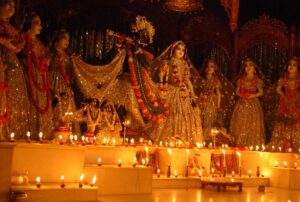 We wish you all a happy Diwali. Diwali, or Dipavali, marks the end of the year, and by the year’s end we want to pay our debts and rectify our relationships—and then try to do better the next year.
We wish you all a happy Diwali. Diwali, or Dipavali, marks the end of the year, and by the year’s end we want to pay our debts and rectify our relationships—and then try to do better the next year.
The Vedic literatures inform us that in the present age, Kali-yuga, the recommended process for self-realization, or God realization, is the chanting of the holy names of the Lord. Lord Krishna appeared about five thousand years ago and spoke the Bhagavad-gita, and at the end of the Gita (18.66), He instructed:
sarva-dharman parityajya
mam ekam saranam vraja
aham tvam sarva-papebhyo
moksayisyami ma sucah
“Give up all varieties of religiousness and just surrender unto Me. I will deliver you from all sins. Do not fear.”
But how do we surrender to Krishna—practically? It is a big question. Therefore, Krishna Himself came again about five hundred years ago as Sri Krishna Chaitanya and showed us how to serve Krishna and develop love for Krishna, especially in the present age of Kali. He quoted one verse from the Brhan-naradiya Purana (3.8.126):
harer nama harer nama
harer namaiva kevalam
kalau nasty eva nasty eva
nasty eva gatir anyatha
“One should chant the holy names, chant the holy names, chant the holy names of Lord Hari. There is no other way, no other way, no other way for success in the present age of Kali.”
Lord Chaitanya Himself demonstrated how to chant the holy names. Actually, there are two methods: In japa, one chants softly but loud enough that at least one can hear oneself. Our acharyas have recommended that we chant on beads, japa-mala. I suggest that as a New Year’s resolution you all begin to chant at least one mala (round) every day, and that those who are chanting already try to increase. Suppose someone is chanting two malas every day. In the New Year that person can decide to do four malas, or whatever he or she can manage. One mala will take five to ten minutes. So, that is japa.
The other method is kirtan. Kirtan means loud chanting, all together, usually with musical instruments such as mridanga, kartals, and sometimes harmonium. That collective chanting of the holy names of God is very effective in the present age of Kali.
What does chanting do? As Sri Chaitanya Mahaprabhu explains, ceto-darpana-marjanam: chanting cleanses the dirt from the mirror of the mind. If you want to know what you look like, you have to view yourself in a mirror. But if the mirror is covered with dust, you cannot see. So, we have to cleanse the dust from the mirror of the mind; then we can know who we are. In ignorance, we may think we’re the body. We may think that we’re black or white or red or yellow; man or woman; American, Russian, Chinese, or African. We have so many designations based on our falsely identifying with the body. But ceto-darpana-marjanam—when we clear the dust from the mirror of the mind by chanting, we can actually see who we are: not the body but the soul within the body. The soul is not black or white or male or female or Russian or Chinese. The soul is pure spirit, part and parcel of God, the Supreme Spirit, Krishna.
So, chanting will cleanse all the dirt from the mind, from the heart. But how does chanting work? A verse from the Padma Purana (quoted as Cc Madhya 17.133) explains:
nama cintamanih krsnas
caitanya-rasa-vigrahah
purnah suddho nitya-mukto
’bhinnatvan nama-naminoh
“The holy name of Krsna is transcendentally blissful. It bestows all spiritual benedictions, for it is Krsna Himself, the reservoir of all pleasure. Krsna’s name is complete, and it is the form of all transcendental mellows. It is not a material name under any condition, and it is no less powerful than Krsna Himself. Since Krsna’s name is not contaminated by the material qualities, there is no question of its being involved with maya. Krsna’s name is always liberated and spiritual; it is never conditioned by the laws of material nature. This is because the name of Krsna and Krsna Himself are identical.”
The holy name of Krishna is Krishna Himself. Abhinnatvat nama naminoh: there is no difference between the name and the person who has the name. In the material world, the relative world, there is a difference between the name, or word, and the object. For example, if I am in the desert dying of thirst and chant “water, water, water, water,” my thirst will not be quenched, because the word water and the substance water are different. But in the spiritual world, the absolute world, the name of the thing and the thing are the same. So, when we chant the holy name of Krishna, Krishna is actually present, dancing on our tongue. Thus, because Krishna is all pure, when we associate with Him by chanting His holy name, we become purified (ceto-darpana-marjanam). And when we become purified—when we become Krishna conscious—we automatically develop all good qualities.
At present we have qualities that are good, and we have other qualities that are not so good. Often, at the end of the year people make resolutions for the new year—how they will improve. It may be that one will try to not lose one’s temper, or try to not overeat. We make so many resolutions, but after some time we may fail in our determination because of weakness in the heart. The one resolution that will eventually help us develop all good qualities and keep our other, secondary resolutions is the resolution to chant the holy names of God.
Diwali also commemorates the return of Lord Ramachandra to Ayodhya. You all know the history of how Rama was banished from His kingdom into the forest. In the forest Ravana kidnapped Sita and took her to Lanka. Then Rama and Laksmana searched for Sita. They made alliances with many monkey warriors, and eventually They came to the southern tip of India. They built a bridge across to Lanka, and eventually Rama killed Ravana, which is commemorated by Dasara, or Rama-vijaya-dasami. Then Mother Sita was tested in fire, and she emerged pure. And Rama, Laksmana, and Sita, accompanied by other associates, returned to Ayodhya. To prepare for the Lord’s arrival, the residents of Ayodhya placed lamps on the rooftops and balconies and celebrated His return. And Lord Ramachandra was installed on the throne.
We too want to welcome Lord Rama (Lord Krishna) into our hearts. And just as, before we install a Deity, we clean the temple so that it is a fit place for the Lord to reside, similarly we each want to welcome Lord Ramachandra into our heart, to install Him on the throne in our heart. But to make our heart a proper, fit place for Him, we have to cleanse it. Therefore, on the auspicious occasion of Diwali, we chant the holy names of Rama and Krishna—Hare Krishna, Hare Rama—so ceto-darpana-marjanam: the heart is cleansed. Then we can welcome Lord Rama into our hearts and install Him on the throne of our hearts and celebrate His presence.
So, this should be our resolution: to purify our hearts so that the Lord will have a proper place to sit there. And who could be more fortunate a person than he who has Lord Rama, or Krishna, with him?
There are many Ramayanas, histories of Ramachandra, but the most authorized in Sanskrit is the Valmiki Ramayana. Consistent with that version, the Ninth Canto of Srimad-Bhagavatam also contains a short Ramayana. And at the end of the Bhagavatam’s Ramayana, there is a statement that during the reign of Lord Ramachandra all of the citizens were peaceful and happy, just like in Satya-yuga. There are four ages that repeat in cycles, like the seasons. Satya-yuga is the best of the ages, the golden age. Then come Treta-yuga, Dvapara-yuga, and Kali-yuga. The Bhagavatam describes that during the rule of Lord Ramachandra all of the citizens were religious and completely happy, healthy, and peaceful, just like during Satya-yuga, although it was actually Treta-yuga. Srila Prabhupada comments that by God consciousness, Krishna consciousness, one can invoke Satya-yuga, or Rama-rajya, even in Kali-yuga. Therefore, the same Krishna who appeared in Treta-yuga as Lord Ramachandra appeared in Kali-yuga as Lord Chaitanya to introduce the chanting of the holy names—Hare Krishna and Hare Rama.
So, if we take up the chanting of the holy names, we can not only invoke the presence of Lord Rama within our hearts, welcome Lord Rama into our hearts, but we can also recreate the situation of Satya-yuga, the situation of Rama-rajya. Sometimes Srila Prabhupada remarked, “People want the kingdom of God without God.” But we cannot have the kingdom of God without God. We cannot have Rama-rajya without Rama. But if we invoke the presence of God, of Krishna, by chanting His holy names, we can have the same experience of Satya-yuga in Kali-yuga. We can have the same experience of Rama-rajya when, as described in the Bhagavatam, Rama loved all of the citizens just like a father loves his children, and all of the citizens loved Lord Rama and obeyed Him just like children love and obey their father. By Krishna consciousness, we can have the same situation even today. And if on this Diwali you can take a vow, make a resolution, to chant every day in the next year—and in all the years to come—that will bring you all auspiciousness.
We pray that the Lord will bless all of you in the year to come, and that you will also take the blessing of chanting into the New Year.
Hare Krishna.
[A talk by Giriraj Swami on Dipavali, October 25, 2003, Houston]
On Saturday, October 8, 2022, ISKCON Philadelphia and our Philadelphia Vaishnavas C.A.R.E. Team presented our 1st Annual Holistic Health Fair in order to welcome our neighbors to the temple for an afternoon of friendship, educational activities, healthcare assessments, and an introduction to Krsna consciousness. After days of stormy rain and cold winds from Hurricane Ian, […]
The post ISKCON Philadelphia & Vaishnavas C.A.R.E. 1st Annual Holistic Health Fair appeared first on ISKCON News.
New Mayapur ISKCON Education Center has provided shelter for devotees who have been displaced in Ukraine. The main task for New Mayapur currently is to increase its energy self-sufficiency as the vital infrastructure of Ukraine is being destroyed including power plants and electricity distribution networks. Now there are around a hundred Vaishnava refugees relocated to […]
The post Ukrainian New Mayapura Needs Our Help appeared first on ISKCON News.
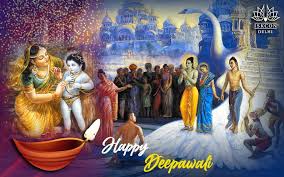
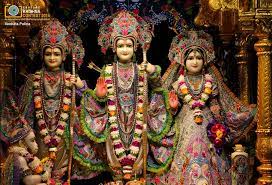
The word Diwali is derived from the Sanskrit word of Deepavali, which means a “row or a string of lights”. Diwali or Deepavali marks the victory of light over darkness. There are many different historical events and stories co-relating to this beautiful festival.
As different cultures celebrate Deepavali in their own ways and traditions, the only thing common is that it is celebrated on the 20th day after Vijaya Dashami. Some celebrate this festival because Lord Rama returned to Ayodhya on this day after an exile of 14 years while some others celebrate Deepavali by worshipping Goddess Lakshmi or Goddess Kali.
SrIla Visvanatha Cakravarti Thakura, quoting from the Vaisnava-tosani of Srila Sanatana Gosvami, says that the incident of Krsna’s breaking the pot of yogurt and being bound by Mother Yasoda took place on the Dipavali Day, or Dipa-malika. Even today in India, this festival is generally celebrated very gorgeously in the month of Karttika by fireworks and lights, especially in Bombay. – S.B. Purport 10.9.1
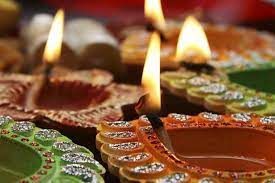
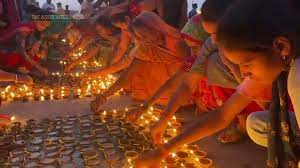

(Kadamba Kanana Swami, 15 September 2022, Vrndavana, India, Balarama Hall Program)
It is now my service to stay here in Vrndavana. This service of mine is not the service of all of you – you all still have to carry on. You still have to go back to all the different places of the world where you come from and spread Krsna consciousness there. That has to be done! I was thinking of Srila Prabhupada’s lions, and how Prabhupada was known as the simha guru. His guru was also known as the simha guru – the lion amongst all spiritual masters. And it is clear that Bhaktisiddhanta Saraswati Thakur, amongst all his disciples, also had a lion. So, in that way, I would also like a few lions. Not here (laughter), but out in the world; lions who are trying to do something extraordinary for Krsna.
Let there be festivals! Look at Indradyumna Maharaj for example – so many festivals where so many people get involved and it is something truly extraordinary. Others like Tribhuvana also did some smaller festivals in Africa, but he did grassroot festivals which involved going into African villages and doing festivals there. So just go and have these festivals to celebrate the glories of Krsna! Please put on a festival – they are powerful in this movement. Festivals are still the same thing in that they make new devotees and bring devotees together. They make this movement something to be a part of and contribute in service towards. That is the nature of the spiritual world – every moment is a festival – every moment is a celebration of the glories of Krsna, a celebration of His Holy Name and a celebration of being together with other devotees. What else is there to do?! Not a moment is wasted then. Every moment is used to glorify the Supreme Lord and to chant His name with taste. Every moment of devotional service counts! People always ask me, what would you like me to do with my life? Well, the answer is simple, make new devotees! If each of you can make 10 devotees, then with 500 people here, you will make 5,000 new devotees! If in your lifetime, you can make 10 devotees, that is something powerful that you do for the Lord.
Watch this full program on our YouTube channel below:
The article " Instructions by Kadamba Kanana Swami Part 2 – Festivals of Krsna’s Glories " was published on KKSBlog.
Podcast:
Giriraj Swami begins 1 hour, 56 minutes before the end.
Podcast:
Video:
Podcast: